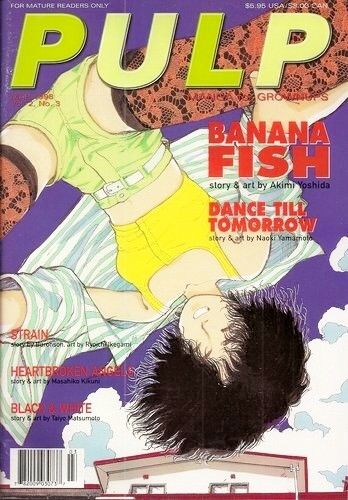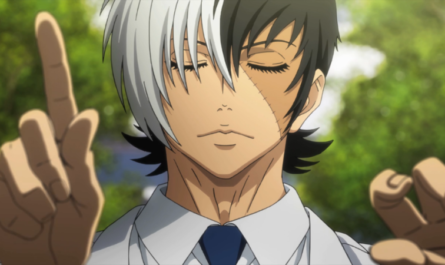Dean Talks Anime(?):
Why We Can’t Have Nice Things Part Two: Television
By Christopher Kinsey
So, last time we looked at why animation has been a medium shunned by people trying to tell a story aimed at adults, but television has had a rich history of adult animation ultimately culminating in… well attempt after attempt to be the next The Simpsons. But of course television is the younger medium, as such it takes time to work out what works and besides, television has always been a more controlled medium by the stations themselves so it stands to reason why diversity doesn’t happen that often. Well, I would argue that television creates pockets for experimentation and then those experiments either become the new normal or are quickly swallowed up and forgotten. Let’s look at where adult animation on TV really took off. I’m of course referring to The Flintstones.

Hey Rocky! Watch me pull yet another reboot out my hat!
OK, small detour before we get there. When television began to really take off animation was there to help fill the hours, but television was a hungry beast not willing to wait for refined animation techniques. And Jay Ward was just the person to make sure that beast got fed. Crusader Rabbit was one of the first successful cartoons ever to be syndicated on television, being test marketed in 1948 and widely distributed in 1950. Using limited animation and simple drawing assets, episodes were serialized and aired over a course of days. Something for kids to look forward to after school. But after legal troubles Jay Ward lost the rights to the series and began shopping around a new variety of cheaply produced shows which could grab any audience. That creation was The Rocky and Bullwinkle Show which added not just some cartoon antics for kids, but bad puns and topical humor for the adults. As such the delivery of consistent content and attention from all kinds of audiences meant Jay Ward productions were meant to define the cartoon landscape on TV for a long time.

Fast forward to today, where this stone-age family teams up with John Cena in a cinematic masterpiece.
Which brings us to Hanna-Barbera. The duo had been producing hit shorts for theaters for some time, and also felt using limited animation would be a great way to make a lot of television content. With the limited animation in place they needed gags and humor to sell the series to kids so they pretty much resorted to outright theft of comedian’s shticks of the time. The Huckleberry Hound Show was their breakout hit. Airing in 1958 it was the first cartoon to win an Emmy in 1960. Many of the bits and mannerisms for the characters on the show were more than a little characters of famous people of the day. They got away with it for a long time, leading to 1960’s release of The Flintstones which was a little more than loosely based on The Honeymooners, a series that aired in 1955. The Flintstones was certainly going to be a different show. First off it aired at 8:30, right before the kids had to head to bed rather than when they got home from school. Then their first two seasons were sponsored by Winston Cigarettes. Every move by NBC at the time was to make sure The Flintstones would appeal to an entire family making time every week to see this stone age sitcom. Every piece of marketing was used to make this series stick out and lasted six years, unheard of for any cartoon of it’s day. As such the idea of a cartoon as a prime time sitcom landed itself in the American psyche.

Their end goal is right there in the block title, people! It’s a good argument to go to church instead.
Travel along the corridors of time to 1989 where Matt Groening is sitting outside a producer’s room at Fox. He’s sweating nervously because he was going to pitch his deformed rabbit underground comic series Life in Hell to be a series of shorts for The Tracy Ullman Show. But just before he got there he had a hot tip where the producers already hated that product. So recycling his own family’s names and a little bit of trickery we have episodes of The Simpsons for over 650 episodes. The trick to it’s initial appeal was this wasn’t a show that portrayed an idyllic American life. It was something that had a touch of truth embedded in a lot of zany gags. But television had made itself a science. When one thing got popular, other stations tried their best to make something that could beat The Simpsons at it’s own game. Fish Police, Family Dog, and many others tried to take a bite out of the adult animated sitcom pie. But it seems for everything ever tried it all boils down to what animated series can run with The Simpsons on Fox itself, because if there is anything the American public craves it’s stability in their nighttime cartoon fare.

MTV used to let you watch these online for free until about 2011. Now, not so much.
Remember how I said television experiments sometimes become the new normal? That’s exactly what I’m referring to. Competing animation blocks don’t seem to work on other channels because somewhere in our minds we figure Fox is the place to see this item. No matter how good the show that shows up on another channel is (Looking at you Duckman) It’s not going to take out Fox’s niche unless we finally lose the pillars of The Simpsons and Family Guy holding it up. But of course Fox knows this and makes sure that should either fall, something is in it’s place. But what about the other experiments? There has indeed been a lot more than animated cartoon sitcoms for an adult audience, so let’s do as Jason Mews once said and examine when “MTV used to have those weird-ass puppets and screwed up cartoons”.

If we had more comic based series like The Maxx instead of whatever Harley Quinn related DC DVD movie is coming out next, one might still be excited for comic books as a whole.
MTV was always known as a great place to experiment with animation. From ground breaking music videos to strange station identification bumps, MTV resonated with the weird and unusual when it came to animation. Which leads us right into the show which has practically made adult animation in the current year, Liquid Television. This series featured lots of shorts from up and coming artists who wanted to do something outside the normal. It was successful enough that many shorts eventually landed their own full length series on MTV such as Beavis and Butt-Head, Aeon Flux and The Brothers Grunt. All these successes made even more independent comic and cartoon artists flock to the studio. We were treated to series such as The Head, The Maxx and more. The 90s was a rush to get offbeat cartoons onto cable, usually without the sitcom format kept by Fox. Comedy Central used many comedians best bits for Dr. Katz, Professional Therapist and the buzz surrounding a video Christmas Card passed around by George Clooney became South Park. HBO even tried it’s hand opting to animate Tood MacFarlane’s Spawn. Cartoon Network responded with blocks of unedited cartoons of old and Toonami’s Midnight Run series of anime. But they also produced Space Ghost Coast to Coast. That single cartoon was the beginning of what broke up MTV’s great animation experiment, and like I said before… once such an experiment fails a network will rarely, if ever, pick it up again.

Where college kids go to not finish their papers since 2001
If the 90s was where off beat adult animation shined on MTV, the 2000s is where Cartoon Network decided to showcase the weird to this very day… to varying degrees of success. 1994 was the first year we were introduced to Mike Lazzo re-cutting various animations of the original Space Ghost cartoon into a strange, fifteen minute talk show. This surreal stew proved very popular in it’s late night slot and paved the way to the 2001 premiere of Adult Swim. An adult themed cartoon block which consisted of Home Movies, Aqua Teen Hunger Force, Space Ghost Coast to Coast, The Brak Show, Harvey Birdman Attourney at Law, Sealab 2021 and the popular anime Cowboy Bebop. It was a great success, and to this day all of these shows are spoken of fondly in animation circles. All those shows that tried and failed to get that piece of The Simpsons pie proceeded to fall into Cartoon Network’s lap and were easily used to fill the time slot. With the success came the inevitable imitations, like Spike TV’s “The Strip” and G4’s Midnight Spank adult animation blocks. At the same time Comedy Central has tried over and over again to find the right new comedy cartoon to pair with South Park to make their own mark in the late night cartoon bubble, but eighteen years later they still have yet to make that happen. Some Adult Swim alumni go on to make an impact on other channels, most notably being Archer on FX. Like it or not, Adult Swim is the experiment that became the new normal. Nothing else is going to replace it.

I can be your Angel (Castlevania) or your Devil (Bigmouth)
Or could we be on the cusp of something that will be the new normal? The rise of streaming is killing cable. As such the original programming on Netflix, Hulu and Amazon Prime is doing the unexpected and not only financing new Japanese animation, but trying to dethrone both Adult Swim and the Fox animation empires. They already have the flavors of Adult Swim down to a science and they have proven that they are still willing to experiment. Can we expect a renewed interest in an animated action series or drama that can stand on it’s own without reliance on comedy to make it more in line with Adult Swim? I’d like to think so, because it’s already happening in the kids sections of the same streaming services. And in Europe shows like Lastman are proving that animation can provide dramatic action that doesn’t require superhero tie ins. While Genndy Tartakovsky might be the only hope for quality in animated adult films, anyone could be the new face of adult animation on TV. I can’t wait to see what becomes the new normal but, with any luck, the new normal might just be that there IS no new normal.
Dean The Adequate’s mother wanted to be, no lie, a cel painter for Disney when she was young. Looking at how the entirety of the industry became, it’s rather good that the technology outpaced her dream. No man should have to see that kind of thing happen to their mom. Dodged a bullet there.



